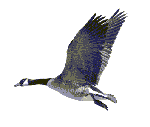Lough Neagh.
|
|
|
Site Home Page | Find Businesses | History | Video | E Postcards | Famous People | Jigsaws Auto Services | Beauty | Bridal Salons | Building Services | Camp Sites | Car Boot Sales | Cruising Holidays | Creches | Diving Holidays | Engineering | Equestrian | Estate Agents | Events | Fairs & Shows | Family Services | Farmers Markets | Fishing || Florists | Fuels | Guest Houses | Hardware | Haulage | Hostels | Hotels | Insurance | Lingerie | Jewelers | Mens Wear | Museums | Music Sessions | Pet Services | Photographers | Self Catering | Taxi | Travel Agents | Vintage | Wedding Transport |
|
Lough Neagh, which is the largest lake in the British islands, is chiefly in this county, but extends into several others , it is traditionally stated to have been formed in the year 62, by an irruption of the sea, but is obviously formed by the confluence of the Blackwater, Upper Bann, and five other rivers. This lake is about 20 British miles in length from north-east to southwest, about 12 miles in extreme breadth from east to west, 80 miles in circumference, and comprises about 154 square miles, its greatest depth in the middle is 45 feet. According to the Ordnance survey, it is 48 feet above the level of the sea at low water, and contains 98,255½ statute acres, of which 50,025 are in this county, 27,355½ in Tyrone, 15,556¾ in Armagh, 5160 in Londonderry, and 138 in Down. The only outlet is the Lower Bann, which being obstructed by weirs and rocks prevents the free egress of the waters, and causes the surrounding country to be injuriously inundated in winter. In some places the waters possess medicinal properties, which they are supposed to derive from the adjacent shore. They have also petrifying powers, but these are supposed to exist in the soil, as petrifactions are only found in the lake near the shore of this county, while they are found at considerable heights and depths and at some distance from the coast inland. Valuable hones are made of the petrified wood, and in the white sand on the shore very hard and beautiful stones, known by the name of Lough Neagh pebbles, are found, they are chiefly chalcedony, generally yellow or veined with red, susceptible of a fine polish, and highly valued for seals and necklaces. Besides the fish usually caught in fresh water lakes, Lough Neagh has the char, a species of trout called the dollaghern, and the pullan or fresh water herring. Swans, teal, widgeon, herons, bitterns, and several other kinds of birds frequent its shores. Canals connect it with Belfast, Newry, and Coal island, and a steam-boat is employed in towing trading vessels across its surface, which, although sometimes violently agitated, is scarcely ever visited by tempests, from the absence of mountains from its borders. This vast expanse of water was frozen in 1739 and 1784, and in 1814 the ice was sufficiently thick for Col. Heyland to ride from Crumlin water foot to Ram's Island, which is the only one of any importance in the lake, and contains the remains of a round tower. Sir Arthur Chichester, in 1604, received from James I. a grant of the fisheries and of the office of Admiral of Lough Neagh, which have been held by his successors and are now vested in the Marquess of Donegal. Lough Neagh gives the title of Baron to Viscount Masareene. North of this lake, and connected with it by a narrow channel about a mile long, over which is the handsome bridge of Toome, is Lough Beg, or "the small lake," containing 3l44¾ acres, of which l624 are in this county, and l520¾ in Derry. This lake, which is generally 15 inches lower than Lough Neagh, contains four small islands, and its banks are more diversified and pleasing than those of the larger lake. The soils are of considerable variety, that of the plains and valleys is a strong loam upon clay, capable of being rendered very fertile, and in many parts interspersed with whinstones lying on or near the surface, the removal of which is necessary preparatory to tillage. On the rising grounds this kind of soil assumes a different quality, the vegetable mould diminishing in quantity, and being lighter in texture and colour; and the substratum deteriorates into a brown or yellow till. Still nearer the mountains this change becomes more apparent from the coarse and scanty produce, rocks and stones in many parts occupying nearly the entire surface, and the soil gradually acquiring a mixture of peat, and thus forming extensive moors. To the north of the Lagan, at a short distance from Belfast, commences a sandy loam which extends, with occasional interruptions, to the Maze-course, and under good management is very productive, on the shores of Lough Neagh are likewise some tracts of a similar soil, and small stripes of sand are found on different parts of the sea shore. Gravelly soils prevail on the irregularly disposed swells above mentioned, which are composed of water-worn stones of various dimensions, with a loamy covering. There are several detached tracts of soils of various texture, of a superior quality, resting on a substratum of limestone; one of the most extensive lies in the parishes of Maheragall and Soldierstown. Besides the turf, a prevailing soil upon the mountains is a peculiar loam without either cohesion or strength, which appears to be only a rust or oxyde of the softer parts of the ironstone, and under tillage yields exceedingly scanty crops of grain, but an abundance of straw, and tolerably good crops of potatoes , its herbage forms excellent pasturage. |
||
Go
to our page on Lough Neagh. |
|
